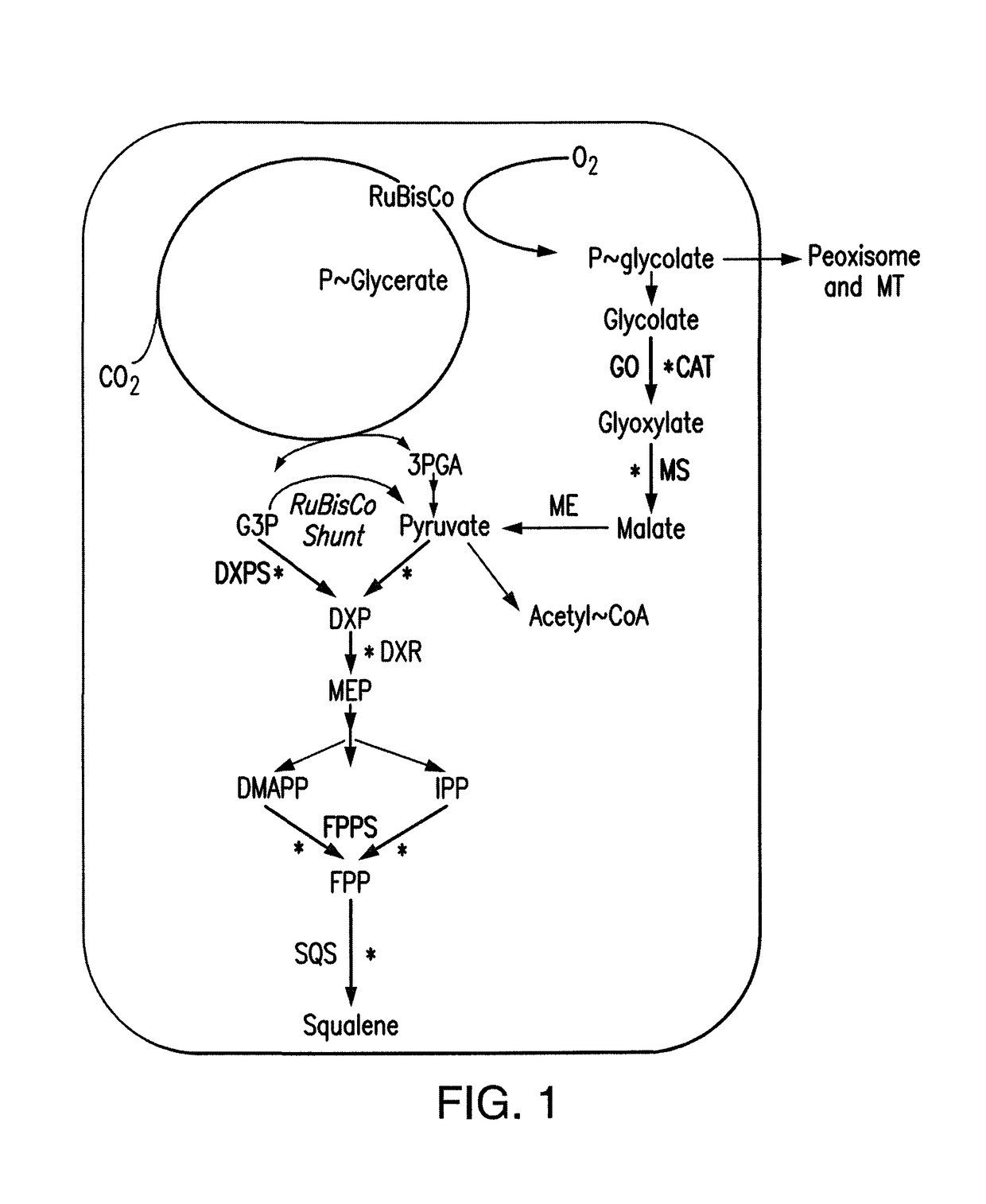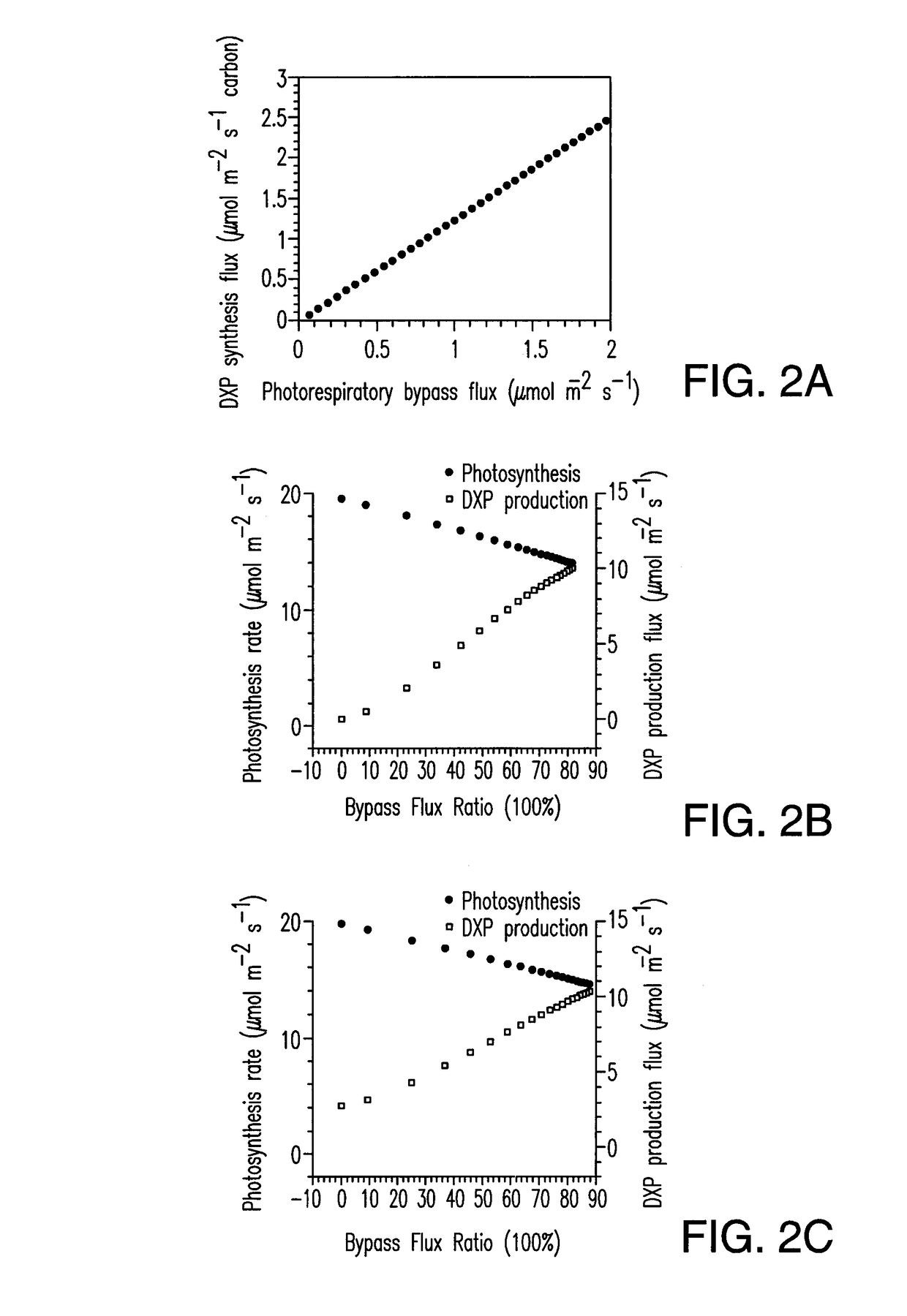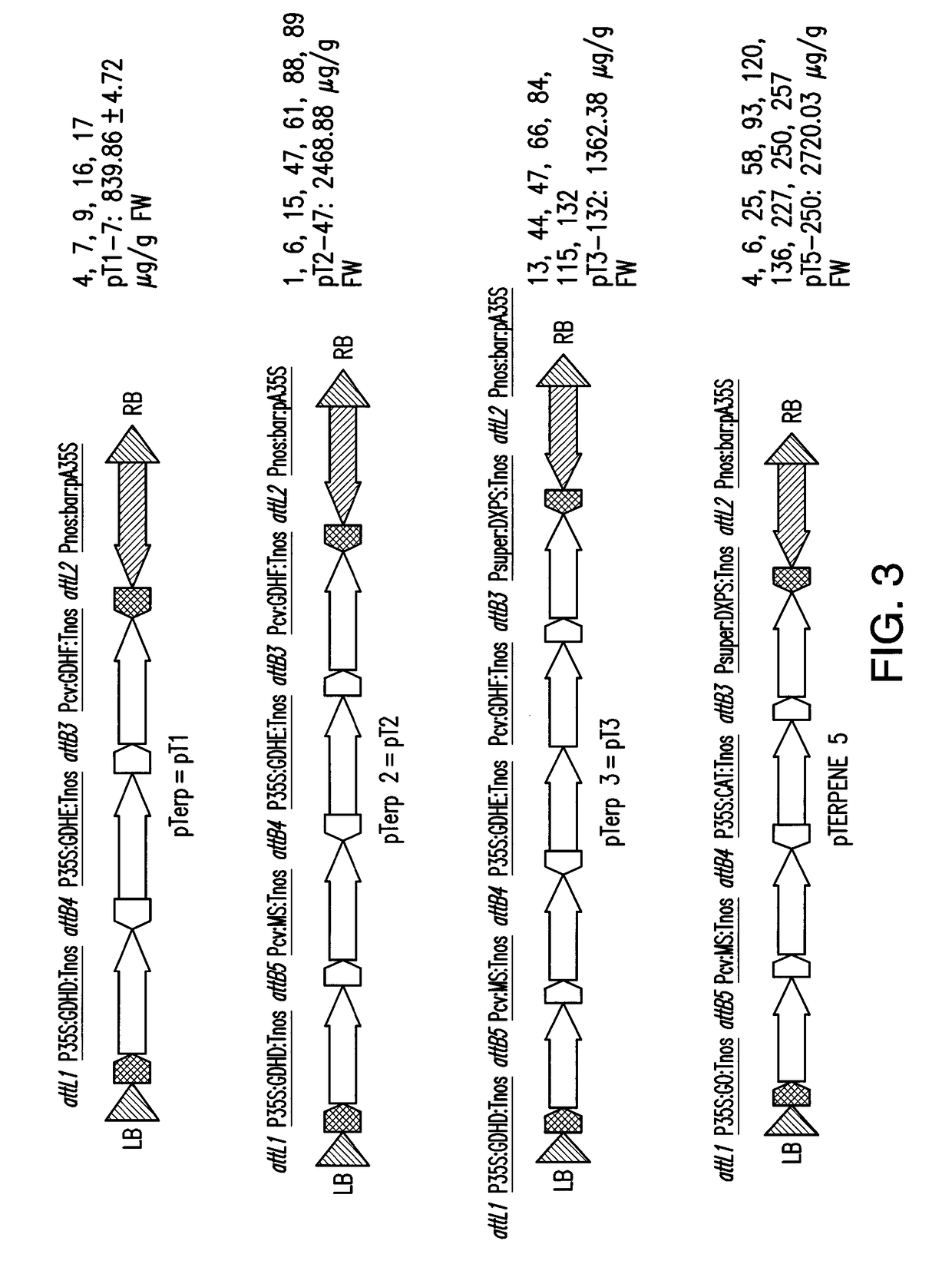Rerouting the photorespiration pathway in plants for increasing bioproduct yield
a photorespiration pathway and plant technology, applied in the field of methods, can solve the problems of high metabolic cost of photorespiration process, and achieve the effect of increasing the production level of said biological product and increasing the production of biological produ
- Summary
- Abstract
- Description
- Claims
- Application Information
AI Technical Summary
Benefits of technology
Problems solved by technology
Method used
Image
Examples
example 1
Mathematical Modeling
[0078]Mathematical modeling of pathway flux was carried out by combining all kinetics information of the enzymes. The new models were built based on the inventors' previous models on photosynthesis by integrating the terpene pathway (FIG. 1). The modeling outcome shows that the flux to terpene will respond to the bypass efficiency (FIG. 2A), and the increase of terpene yield will not collapse photosynthesis or will not decrease the photosynthesis with the same rate (FIG. 2B, C).
example 2
Plant Materials
[0079]Seeds of high-squalene (G1) tobacco plants and tobacco plant transformants (pT1, pT2, pT3, and pT4 transformed G1) were sterilized with 70% (v / v) ethanol for 30 s, and then with 2% (v / v) sodium hypochlorite solution for 10 min, followed by rinsing 3 times in sterilized water. The basal medium for germination and initial growth of the seeds consisted of salts and vitamins of MS medium with appropriate antibiotics, solidified with 0.8% (w / v) agarose.
example 3
Preparation of Agrobacterium tumefaciens
[0080]Four vector constructs (named pTERPENE1, 2, 3, 5; or pT1, 2, 3, and 5) (FIG. 3) were introduced into armed Agrobacterium tumefaciens strains GV3101 and COR308 via electroporation. A culture of Agrobacterium rhizogenes was initiated from glycerol stock and grown overnight at 28° C. with shaking (180 rpm) in liquid Luria-Bertani (LB) medium containing 50 mg 1-1 kanamycin, to mid-log phase (OD600=0.5). The A. rhizogenes cells were collected by centrifugation for 10 min at 4000 rpm and resuspended in liquid inoculation medium (MS salts and vitamins containing 30 g / L sucrose). The Agrobacterium cell density was adjusted to an OD600 of 1.0 for inoculation.
PUM
| Property | Measurement | Unit |
|---|---|---|
| area | aaaaa | aaaaa |
| kanamycin resistance | aaaaa | aaaaa |
| current | aaaaa | aaaaa |
Abstract
Description
Claims
Application Information
 Login to View More
Login to View More - R&D
- Intellectual Property
- Life Sciences
- Materials
- Tech Scout
- Unparalleled Data Quality
- Higher Quality Content
- 60% Fewer Hallucinations
Browse by: Latest US Patents, China's latest patents, Technical Efficacy Thesaurus, Application Domain, Technology Topic, Popular Technical Reports.
© 2025 PatSnap. All rights reserved.Legal|Privacy policy|Modern Slavery Act Transparency Statement|Sitemap|About US| Contact US: help@patsnap.com



